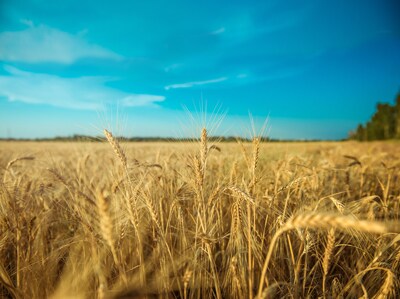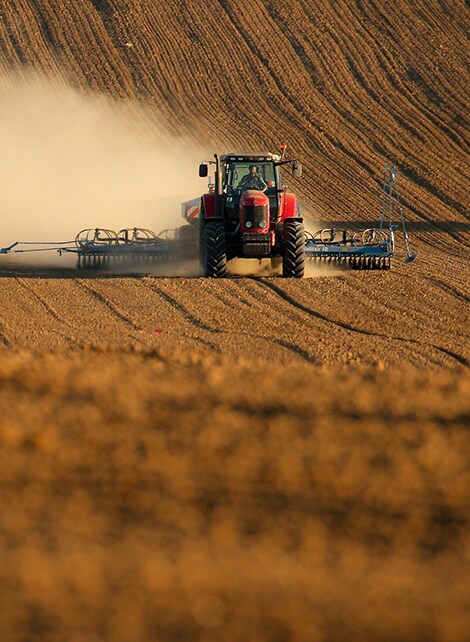Special Awareness Days
February 15th - Canada’s Agriculture Day

Ready to Order?
If you are ready to order, please contact Customer Service:
Telephone: 1 (800) 361-6128 Fax: 1 (800) 563-9196
Introduction
Canada is one of the largest producers and exporters of agricultural products in the world. From the huge wheat fields and cattle ranches in Canada’s prairies to the dairy, fruit, and vegetable farms across the country, we proudly celebrate Canada's Agriculture Day.
On July 1st, 1867, the federal department of agriculture appointed the first Minister of Agriculture. Today, Agriculture Canada’s food and beverages can be found around the world.
Did you know?
- Canada is the 5th largest food and beverage exporter in the world
- The Canadian farming industry employs 2.2 million people!
- In 1931, one in three Canadians lived on a farm. Today, that number is one in 50.
- Over 97% of Canadian farms are family owned.
Have you thanked a farmer today?

Activity Bursts
Grades K-2
Art, Social Studies, Health, Math
Ask the students to draw and colour pictures of their favourite foods. Share and ask:
- What are the most popular foods in this classroom? Make a graph!
- Where do you think _______________(fill in with food selection) comes from?
- How does this food get to you?
Explain that Canada has farms in every province. Some are fruit and vegetable farms, some are meat and dairy farms, and some grow grains like wheat, soy, oats, and barley.
Check with your provincial or territorial Agriculture in the Classroom for a series of interesting activities.
Grades 3-5
Language, S.T.E.M. Health
Ask students what they do in a typical day. What time do they get up? What do they eat for breakfast? What time do they go to school, eat lunch, etc.?
Show students one of the virtual 360 degree tours entitled “A Day in the Life of a Dairy Farm Family.”
Discuss by asking:
- What time does the dairy farmer have to get up to attend to the cows? Would you find this difficult?
- How does this Canadian farmer use technology to help him/her in the farming operation?
- What tasks do dairy farmers do every day that do not use this modern technology?
- What surprised you the most about the video you saw?
Share with the class the website “Farm Food 360 degrees.” This Canadian site provides several very short videos that help students see the processes for getting many products from the farm to the table. It also provides interesting facts about many other kinds of farms.
Additionally, Canada’s Agriculture and Food Museum has interesting information for students on what is in the food they are eating and how to make informed choices.
Note:
If you do not have access to technology required to show the online videos, use the short farm facts listed in these sites to promote a discussion of how valuable farmers are and how fortunate we are in Canada to have all of these resources.
Grades 6-8
S.T.E.M., Language
Share the information about Canada's Agricultural Day in the introduction above. Ask:
- Did anything about these facts surprise you? What and why?
- Have you ever been to a farm? What kind? Discuss.
- What do you know about the changes that modern technology has made to farming operations? Discuss.
Note: Depending on whether your school serves a rural or urban community, the responses to the questions above will vary greatly. Either way, there is something to be gained by the activity suggested below.
The website produced by Farm and Food Care, entitled, “The Real Dirt on Farming” contains a wealth of interesting and current information related to agriculture in Canada today.
Invite students to research one of the following topics and create a written summary, poster, PowerPoint presentation, or visual representation of their findings to share with the class.
Here are some suggestions:
- What are “free range” and “free run” chickens and eggs?
- What is a ruminant?
- What does “organic” mean?
- Why do farmers use pesticides?
- What are the Codes of Practice for the Care and Handling of Farm Animals?
- What’s the difference between soil and dirt?
Set a time frame for the assignment and additional parameters if you wish. After students have presented, process the activity by asking:
- What was the most interesting thing you learned while working on your project? Explain.
- Has this activity given you any insight on the challenges that modern farmers face in today’s world? Explain.
Consider using these questions as a basis for a science experiment or Science Fair project!
Here are additional sites that may be helpful:
References:






